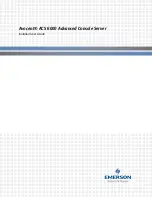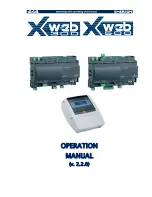
This soft copy for use by IBM employees only.
-P
Make change permanent
-d directory
Specifies the directory where the dump is copied at boot time. If
the copy fails, the system continues to boot.
-D directory
Specifies the directory where the dump device is copied at boot
time. If the copy fails, then a menu is displayed to allow the user
to copy the dump.
-z
Writes out to standard output the string containing the size of the
dump in bytes and the name of the dump device, if a new dump
is present.
AIX version 4 uses /dev/hd6 (paging) as the default dump device unless the
system was
migrated from AIX version 3, in which case it will continue to use
the AIX version 3 dump device /dev/hd7.
Important
The previous paragraph does not apply for the SP nodes, which use /dev/hd7
as the default primary dump device.
If a dump occurs to paging, the system will automatically copy the dump when
the system is rebooted. By default, the dump gets copied to the /var/adm/ras
directory.
The recommended value is that the dump device is at least a quarter of the size
of real memory. In such situations, it is advisable to create a temporary dump
logical volume of the size required and manually recreate the environment in
which the dump occurred. If the dump device is not large enough, the system
will produce a partial dump only. It is possible, but extremely unlikely, that a
Support Center can determine the cause of the crash from a partial dump. The
-e flag can be used as a starting point to determine how big the dump device
should be.
8.1.1 How to Start a Dump
There are three ways for a user to invoke a system dump, but only two are valid
on the SP nodes, since keyboard input is not possible. Which method is used
depends on the condition of the system.
If there is a kernel panic, the system will automatically dump the contents of real
memory to the primary dump device.
The user/administrator can initiate a system dump at any time by pressing the
reset button (using spmon or GUI) while the keylock position is set to service
mode.
Bear in mind that if your system is still operational, a dump taken at this time
will not assist in problem determination. A relevant dump is one taken at the
time of the system halt.
Do not start a dump if the flashing
888 number shows on the LED. This number
could indicate that a dump has already occurred on your system. (You can
determine this by finding out the LED code that is displayed after the flashing
888. If it is a 102, then this indicates that a dump has occurred). This indicates
that your system has already created a system dump and has written the
204
SP PD Guide
Summary of Contents for RS/6000 SP
Page 2: ......
Page 14: ...This soft copy for use by IBM employees only xii SP PD Guide...
Page 16: ...This soft copy for use by IBM employees only xiv SP PD Guide...
Page 106: ...This soft copy for use by IBM employees only 86 SP PD Guide...
Page 178: ...This soft copy for use by IBM employees only 158 SP PD Guide...
Page 214: ...This soft copy for use by IBM employees only 194 SP PD Guide...
Page 248: ...This soft copy for use by IBM employees only 228 SP PD Guide...
Page 290: ...This soft copy for use by IBM employees only 270 SP PD Guide...
Page 292: ...This soft copy for use by IBM employees only 272 SP PD Guide...
Page 300: ...This soft copy for use by IBM employees only 280 SP PD Guide...
Page 304: ...This soft copy for use by IBM employees only 284 SP PD Guide...
Page 308: ...This soft copy for use by IBM employees only 288 SP PD Guide...
Page 310: ...This soft copy for use by IBM employees only 290 SP PD Guide...
Page 316: ...IBML This soft copy for use by IBM employees only Printed in U S A SG24 4778 00...
















































